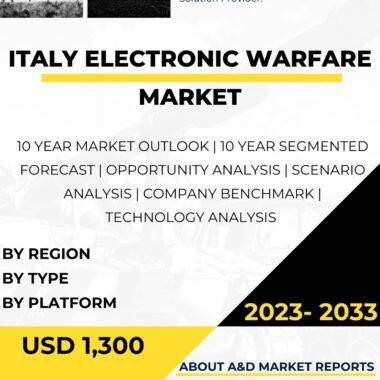Description
The Ship Radar market in Malaysia has witnessed significant growth and development in recent years, reflecting the country’s commitment to enhancing its maritime surveillance capabilities, improving navigational safety, and strengthening its maritime security. Ship radar systems play a crucial role in ensuring the safe and efficient operation of vessels, supporting maritime law enforcement, and contributing to the country’s overall economic growth and security.
As an archipelagic nation with extensive coastlines and a strategic maritime location in Southeast Asia, Malaysia faces diverse maritime challenges, including piracy, smuggling, illegal fishing, and environmental threats. The integration of advanced ship radar systems into its maritime infrastructure enables Malaysia to monitor its territorial waters, Exclusive Economic Zone (EEZ), and critical maritime chokepoints effectively.
The Ship Radar market in Malaysia has witnessed significant technological advancements. Modern ship radar systems utilize high-frequency radio waves and sophisticated signal processing algorithms to provide improved range, accuracy, and resolution. These advancements have expanded the radar’s detection capabilities, enabling vessels to identify and track other ships, navigational hazards, and potential threats in real-time.
Moreover, ship radar systems are essential for navigational safety. They provide vital information on the positions, distances, and movements of other vessels and objects in the vicinity, helping to prevent collisions and ensuring safe navigation, especially in congested waterways and adverse weather conditions.
Additionally, ship radar systems enhance Malaysia’s maritime law enforcement capabilities. The Malaysian Maritime Enforcement Agency (MMEA) and the Royal Malaysian Navy (RMN) utilize ship radar systems to detect and monitor vessels engaged in illegal activities, including piracy, smuggling, and illegal fishing. These radar systems contribute to effective maritime patrolling, enforcement, and surveillance.
Furthermore, ship radar systems are instrumental in environmental monitoring and protection. They can detect and track oil spills, marine debris, and other environmental hazards, enabling timely responses to mitigate potential environmental damage.
The Malaysian government has recognized the importance of international collaborations in acquiring and developing ship radar technologies. Partnerships with leading global radar manufacturers and maritime technology providers have facilitated access to cutting-edge ship radar systems and expertise. These collaborations have enabled technology transfer and capacity building, contributing to the growth of Malaysia’s domestic ship radar capabilities.
Furthermore, Malaysia has been actively investing in local research and development (R&D) initiatives to foster indigenous ship radar technologies. By encouraging homegrown innovation, Malaysia aims to achieve self-reliance in ship radar development and strengthen its maritime technology industry.
While the Ship Radar market in Malaysia shows promise, it is not without challenges. One of the primary hurdles is the high cost of acquiring and maintaining advanced ship radar systems. These sophisticated radar systems require significant investment in procurement, installation, maintenance, and upgrades. Budget constraints may impact the pace and scale of ship radar acquisition and modernization efforts.
Moreover, ship radar systems require skilled operators and specialized training. The Malaysian Maritime Enforcement Agency, the Royal Malaysian Navy, and other maritime agencies must invest in continuous training and education to ensure their personnel possess the necessary expertise to operate ship radar systems effectively.
Additionally, coordinating radar data from multiple vessels and maritime surveillance centers to achieve seamless and integrated maritime domain awareness is a logistical challenge. Data sharing and information fusion across different maritime agencies and platforms require robust communication and coordination mechanisms.
Looking ahead, the Ship Radar market in Malaysia is poised for further growth. The government’s commitment to enhancing its maritime surveillance capabilities, navigational safety, and maritime security will drive continued investments in ship radar systems. As ship radar technologies continue to evolve and demonstrate their effectiveness, they are likely to play an increasingly pivotal role in Malaysia’s maritime operations and security.
Moreover, Malaysia’s participation in regional and global maritime security collaborations will likely influence its ship radar requirements. As the country seeks to strengthen its position as a key player in regional maritime security and cooperation, the demand for advanced ship radar systems with interoperability and compatibility with allied forces will increase.
In conclusion, the Ship Radar market in Malaysia has experienced significant growth and progress. The government’s focus on enhancing its maritime surveillance capabilities, navigational safety, and investing in advanced ship radar technologies has paved the way for the integration of modern ship radar systems into its maritime infrastructure. International collaborations and domestic research efforts have positioned Malaysia as a participant in the global ship radar technology landscape.
However, challenges related to budget constraints, technology development, training, coordination, and engineering expertise must be addressed proactively to sustain and enhance the growth of the Ship Radar market in the years to come. By maintaining a modern and capable ship radar fleet, Malaysia can effectively enhance its maritime security, navigational safety, and maritime domain awareness, contributing to the country’s overall economic growth and security.




